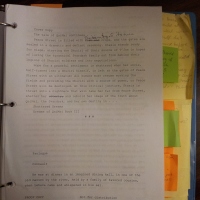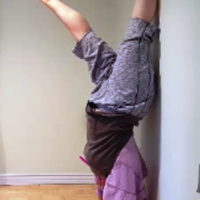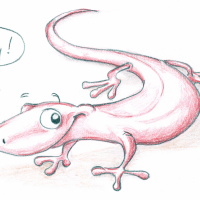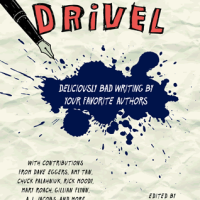~ Guest post by Selah J Tay-Song, author of Dream of a Vast Blue Cavern, Book 1 of the Dreams of QaiMaj series ~
Greetings Dogpatch Writers Collective! Thanks so much for the honor of being invited to blog with you. Woof!
On my own blog, I usually ramble along about whatever I’m thinking about at the moment, be it writing, insomnia, or cute cat videos. (You didn’t hear that, doggies). I thought for such a sophisticated pack as Dogpatch I should post something writing-related with a potential craft outcome for the reader.
Okay, you got me, I didn’t come up with that one on my own. This dog park has some leash-laws. No cute cat video reviews. Yip!
So I thought I’d share an epiphany I had this year that had a profound impact on how I write (writing-related, check!), and could just change how you write, too (potential craft outcome, check!).
I’ve been working on novel-length manuscripts since I was fourteen, and all this time I’ve been struggling with the question of how to manage such a sheer volume of words. I write long-winded fantasy epics that tend to explode from one book into five, so for me that’s a lot of words.
Here’s how my writing process has typically worked:
1. Get an idea for story
2. Start drafting from idea
3. Run out of ideas, attempt to outline the rest of the story
4. Draft a novel which in no way resembles said outline
5. Stare in horror at 150K word mess on paper.
It usually takes five to ten years to sort out this mess. I end up with huge chunks that are no longer relevant or don’t work the way they did before, because I changed the whole story half-way through. I also end up with huge holes in the story, entire scenes missing that are necessary to bring the reader along to the end. Or one logical error that requires me to rethink the entire plot.
A few years back my hard drive died while I was writing the first draft of Dream of a Vast Blue Cavern (no, I did not have a back up. Bad doggie!) and after a brief tantrum I realized: it doesn’t matter. I needed to re-write the whole thing anyway.
For someone with aspirations to be a prolific writer (I’d like to eventually produce a book a year, but two would be nice) this simply will not do. I’d always heard there were two types of writers, Discovery Writers—also affectionately referred to as Pantsers (because they write by the seat of their pants, not because they write without pants on)—and Outliners, who lay everything out before they put down a single scene. Those Outliners must have it so good, I thought, dreaming of being able to write a tight outline, draft the book, and be done. I can do that, I thought. I’m an organized person, right? *Glances self-consciously at pile of junk where her desk once was*
The outlining process went smoothly at first.
1. Get an idea
2. Resist the urge to draft and write an outline instead
3. Give in and draft a few scenes to get to know the story
4. Finish the outline
5. Draft a stiff caricature of a tale whose symbolism is about as subtle as a dog humping a chair.
Clearly, outlining was not going to work either.
When something isn’t working, the best thing you can do is take a look at your process for what is working. I started to notice a trick I was using to keep myself abreast of the story. When I was writing a scene and began to see where it was going, I would make notes just below where I was writing: “character x does y, which makes character z react like this. Then b happens, and they go to point a.” Etc.
For awhile I ignored the significance of this development. I thought of it as “outlining ahead.” Like outlining, it is a way of planning the story before drafting. But after some time I realized that what I was doing was something completely different. I wasn’t outlining a plot. I was telling the story.
I can see you are skeptical, so let me illustrate with an example. When we tell each other stories, we nearly always summarize. Let’s say I wanted to tell you about the time I got hit by a car on my bike. I wouldn’t tell it through a descriptive narration, like this:
“I left my house in a hurry without my helmet, not wanting to ruin my hair before the job interview. It was rush hour and the exhaust from the cars made the air thick and choking at street level. Rain threatened, and when I turned onto Blacklake Boulevard, huge drops began to splatter the pavement. I pedaled faster, trying out outrun the wind . . .” Not even the best of friends would sit through hours of that.
Nor would I tell you like this: “1. Left house, forgot helmet. 2. Rode in rain down Blacklake. 3. Reached onramp, looked for traffic, couldn’t see any. 4. Kept riding. Saw car just after entering intersection.” While this conversation might go a little faster, chances are you’d be looking for an excuse to change the subject.
What we do when we verbally tell stories is give our audience the shape of the story, along with a few crucial details. “Did I tell you about the time I got hit by a car on my bike? I was riding in the rain down Blacklake, late for a job interview, no helmet. I looked behind me to see if a car was coming around the corner onto the onramp, didn’t see anyone so I went, then bam! All of a sudden I was flying through the air. I couldn’t believe it was happening. I was in shock.”
See the difference? It’s not a lengthy narration, nor is it a dry outline. It starts with the overarching story idea (what is this story about?). It touches on the major events, but also includes some of the important details and emotional significance that glue the story together. This is the kind of storytelling people have been doing since the use of language arose, since the first bored cave-persons were sitting around the proverbial fire.
This is also exactly the kind of “telling” that traditional writing instruction would have you shy away from. “Don’t tell reader you were in shock, show them.” Of course this is true when you’re writing a book. But as shorthand, to organize the events and emotions of a story, it works great. I began to wonder: what if I wrote the entire book like this, before I wrote the first scene? What if I just told the story first, then went back and narrated it?
With nothing better to do with my time, I decided to try it on Book II of my Dreams of QaiMaj series.
I wrote a forty page summary for not just Book II but the entire rest of the series, and if that seems long, I can tell you it’s a whole lot easier to handle than 150K words, or the 600K that the rest of this series is likely to be. I spent about four months writing and re-writing this summary. After that, I spent another four months drafting Book II. Now, that draft is staring up at me, waiting for some TLC.
I feel far, far more confident about these 150K words than I ever have about a draft before. I think I have a cohesive story down, not a gigantic mess. I have a lot of revision to do, but not a huge amount of re-writing. My revision pass will be focused on making every scene stronger, not trying to figure out if that scene should be there in the first place.
Telling the story first enabled me to do a couple things I couldn’t have done with an outline or a draft.
First, I was able to read through the whole story (in summary form) in one sitting, hold it all in my mind, and see where threads were not connecting, where logical fallacies lay, where characters went stale or dead-ended rather than developing.
Second, I was able to share it with my writing group (it’s a lot easier to get them to read 40 pages than 400) to get their feedback on the whole story. Whatever gaps I missed, they caught. Unlike an outline, which often reads like algebra to anyone except the author, they could see the shape of the story.
Another unexpected advantage was that my paragraph level writing was stronger. In past drafts, my scenes have been sort of half-done, because I’m expending a lot of energy trying to figure out what will happen next in the story. With my summary, I’ve already told the story, so when I draft, I’m able to concentrate on writing the strongest possible scene.
If you’re a panster or an outliner or have some other method and it’s working, keep doing it. My number one rule in writing—pretty much my only rule—is always do what works for you, not what someone else tells you a writer should do. But if like me you’ve struggled for years with your particular writing method, summarizing might be worth a try. Next time your plot baffles you or that character just won’t reveal what she’s going to do next, try sitting down and telling the story on paper. Pretend you’re sitting around that proverbial fire, or chatting with a friend over a glass of wine. Don’t worry about your voice or grammar or getting the details just right. There’s no pressure here to write the Next Great American Novel. Just good, old-fashioned, storytelling.
Selah J Tay-Song was born and lives in Washington State. She graduated from The Evergreen State College with a BAS major in biological sciences and a minor in creative writing. Selah wrote her first fantasy story about a unicorn when she was six years old and has aspired to be an author ever since. Dream of a Vast Blue Cavern, her debut novel, came out of an actual dream where she was crawling through narrow, dark stone tunnels. Follow her blog, buy her book, and learn more about the world of QaiMaj at selahjtaysong.com.



















Pingback: Selah J Tay-Song » 101 TIWIK #49: Planning: From Brainstorm to Form
Pingback: Selah J Tay-Song » Challenge: Blog Daily, + 101 TIWIK
Pingback: Information Management: It’s a Little Like Goldilocks | Dogpatch Writers Collective
Pingback: Selah J Tay-Song » Good News, Bad News
Very insightful blog post, Selah! I’m experimenting with using a storyboard for “The Immortal Game’ book 2, but I may use this method instead, or even combine both.
Thanks Joannah! I can’t wait to read “The Immortal Game” book 2. I wish you luck with whichever method you end up using, and I’d love to hear how it goes!
Pingback: Selah J Tay-Song » A New Revision Strategy
Pingback: Selah J Tay-Song » Guest Post on DogPatch
Selah, 5 woofs to you for passing on this brilliant strategy. I’m going to try it out on my meandering clunker of a novel starting today and hopefully move out of the fog.
Woofs right back at you, susanissima, I hope it works! I think as writers we get so caught up in craft that we forget about the bones underneath it–the shape of the story. Let me know how it goes! -Selah
*Booking it now* and ditto. Thanks for the insightful not to mention hilarious post, Selah.
Is Chloe coming too? I’ll need a buddy : ) Thanks Laurel, and thanks for inviting to post here! Selah
Chloe says she will come if you bring Scoobie snacks! Lots of Scoobie snacks . . .
OMG! as they say in opposable thumb land. This is it! This is exactly the strategy I need to get one of my 20-yr-old “novels that’s not a novel yet,” otherwise known as a pile of paper that’s been sitting on its own opposable thumbs for so long, up and dancing! Thank you ever so much for your insight, SJTS!
Someone get this guest Dogpatcher a week’s stay at the swank WAG Hotel in beautiful downtown San Francisco! I wouldn’t joke about this:
http://www.waghotels.com
Arf-Arf-Thanks Jilanne! Let me know how it goes! Booking my flight now . . .
Scooby has the penthouse at the WAG waiting for you and Chloe. But I”m sure Laurel would supply a bottle of bubbly.